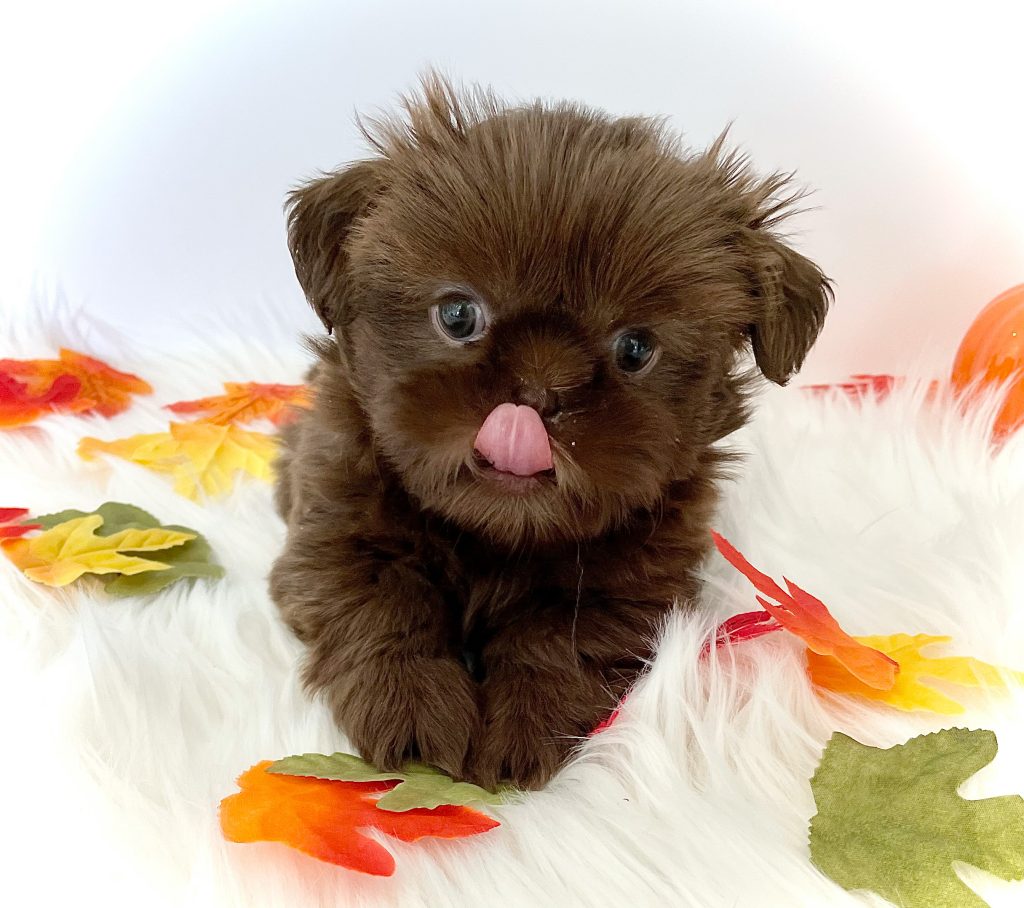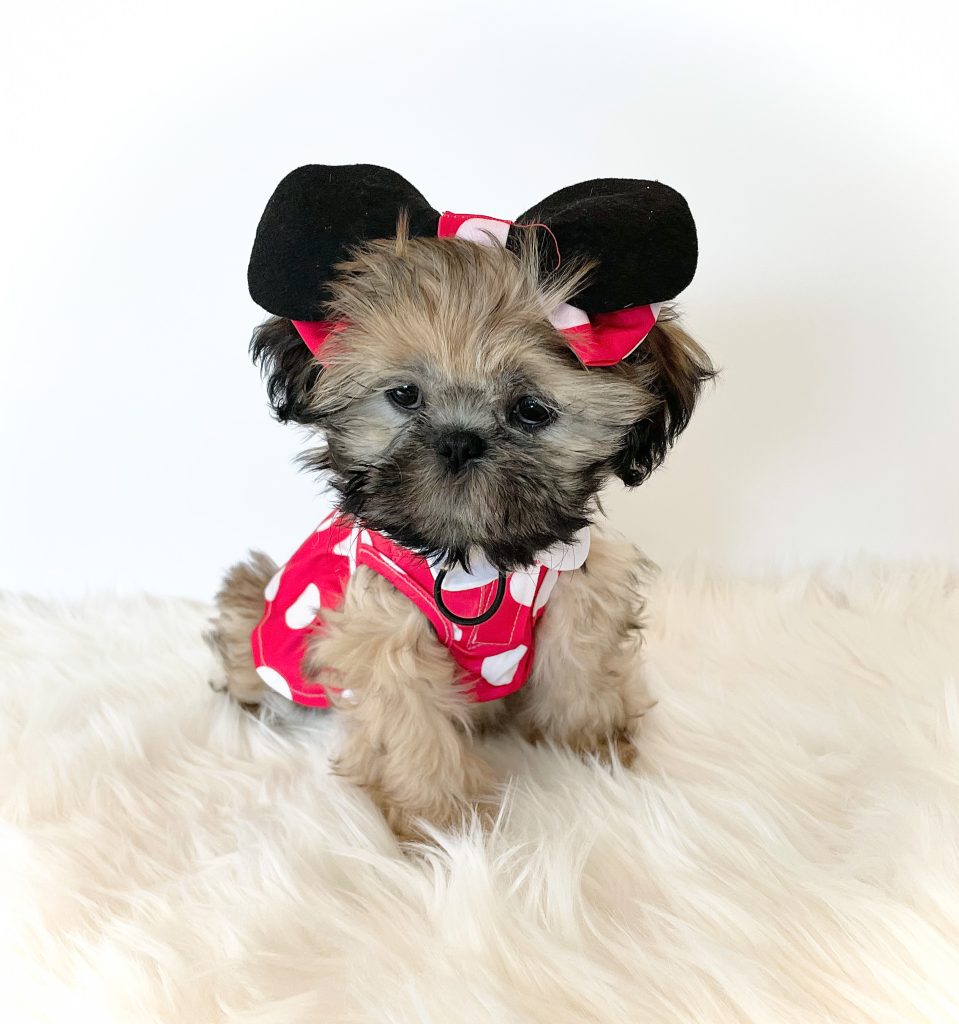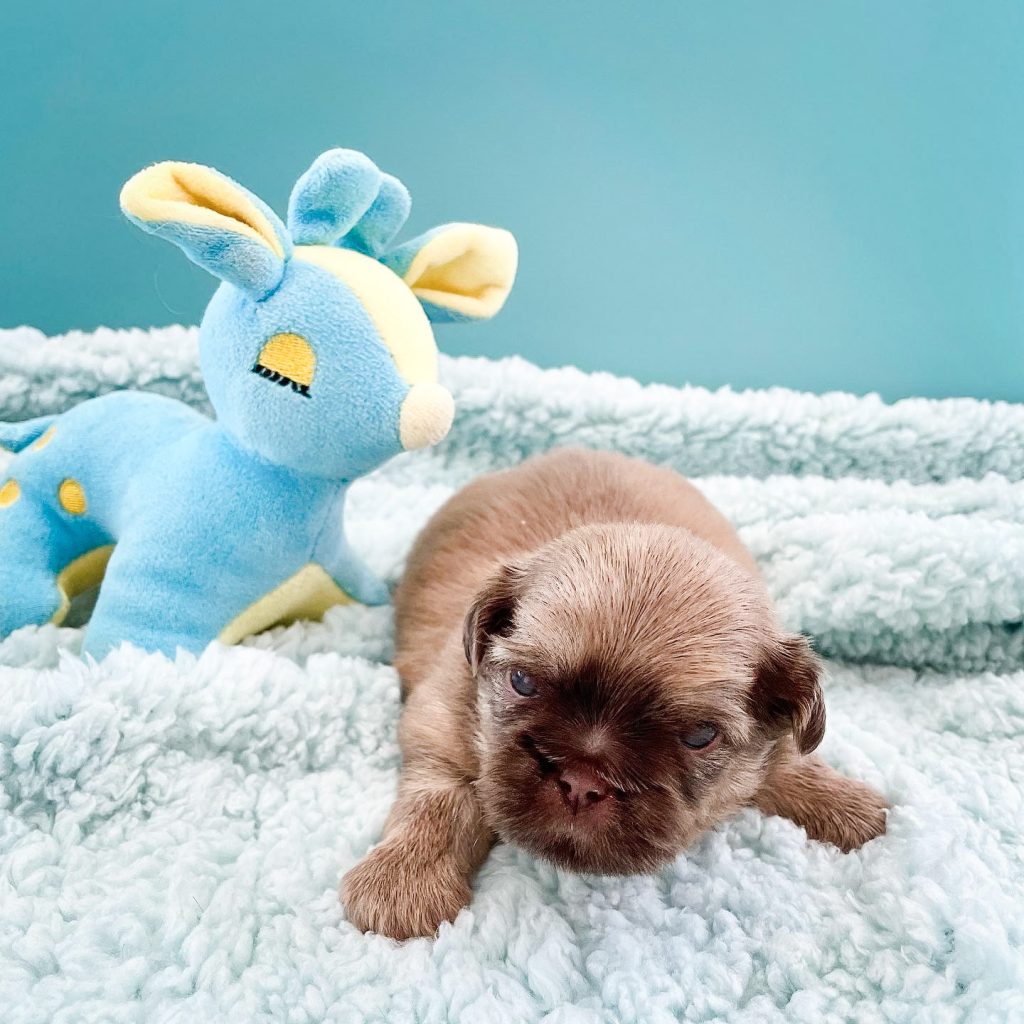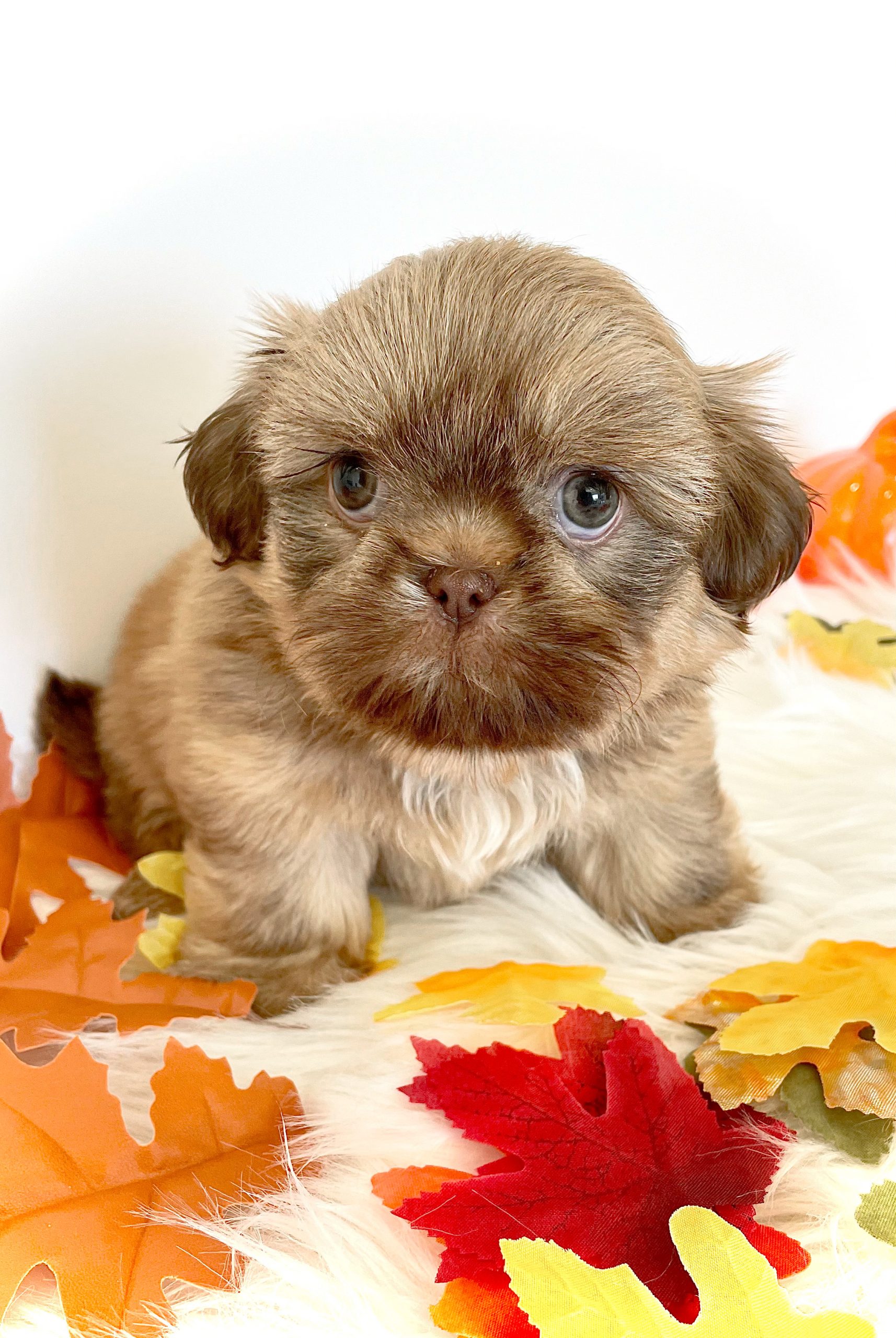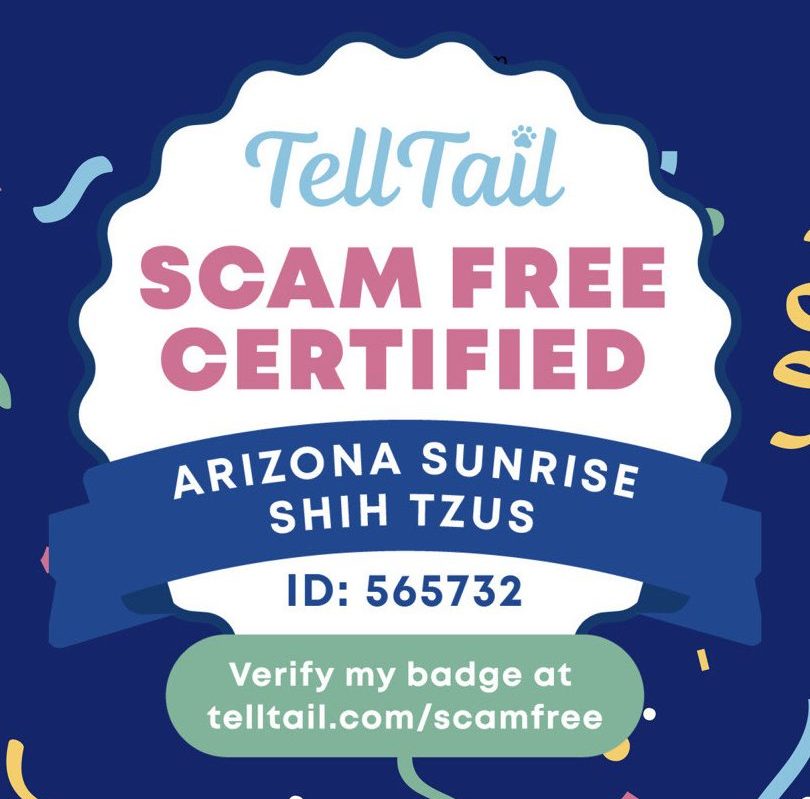Bath time has finally arrived for your new Shih Tzu puppy! If you already have had dogs in the past you probably already know how to bathe your dog. But, for the first-time puppy owner, the task may be daunting! Hopefully, this blog post will ease your fears.
You will need to gather the following supplies before you start bathing your Shih Tzu puppy:
- Shampoo (I like the TropicClean line.)
- A towel or a baby bath mat to place in the sink.
- Baby washcloths.
- A comb for brushing fur.
- A dog eye comb or a fine-toothed comb for the eye area.
- Eye cleaner (I like Burt’s Bee’s eye wash.)
- Ear cleaner if your puppy is prone to ear infections or the ears smell or look dirty. (I like Zymox cortisone free ear cleaner.)
- Cotton balls for cleaning eyes and protecting ears during bath.
- A cup for rinsing your puppy.
- A couple of towels for drying your puppy.
- A blow dryer for drying your Shih Tzu.
- Treats for a job well done.
Bath-Time procedure:
- Brush the coat well. Shih Tzus has a thick double coat. Make sure to get through both layers. Be extra gentle when dealing with mats. It is important to brush through the coat and remove all mats before bathing. Bathing will just mat the coat more if it isn’t brushed out before the bath.
- Next, line the sink with the baby bath mat or a towel. This will prevent your puppy from slipping. Your puppy will feel safer this way.
- Place cotton balls in your Shih Tzu puppy’s ears to prevent water from getting inside the ear canal.
- Place your Shih Tzu puppy on the bath mat or towel. Gently pour water over your puppy with the cup. (Make sure the water is warm but not hot.) If your sink has a hose attachment you can use it if your puppy tolerates it. I typically soak the entire body and leave the head for last. When working with a young puppy I drench a washcloth in warm water. I use the washcloth to gently clean the face area. I’m extra careful when I approach the eye area.
- Then I pour some shampoo into my hand and massage it into the puppy’s fur. You can purchase a squeeze bottle and fill it with shampoo and water if you prefer. I also rub a little shampoo on the top of the puppy’s head, the sides of the face, and under the chin. I am very careful to avoid the sensitive eye area. I use eye cleaner and a cotton ball to clean the eye area after the bath is finished.
- Rinse the shampoo away with warm water.
- Wrap your Shih Tzu puppy in a towel and rub dry.
- Take your eye cleaner and saturate two cotton balls. Gently massage the eye area. Then take the dog eye comb and gently remove any debris. (Click here to read my detailed blog post on eye cleaning.)
- Take the cotton balls out of your puppy’s ears if you haven’t already done so. This is a great time to clean your Shih Tzu puppy’s ears if needed. Gently squirt ear cleaner into the ear. Massage the ear. Then take a cotton ball and dry the area to the best of your ability.
- Blow dry your puppy. Use the warm setting to prevent burning your puppy.
- Once your puppy’s fur is completely dry comb through the fur again gently to make sure there aren’t any tangles. You can do this a little later in the day if the fur is still damp or your puppy needs a break.
- Finally, give your puppy a high-value treat and lots of praise and snuggles for a job well done!

